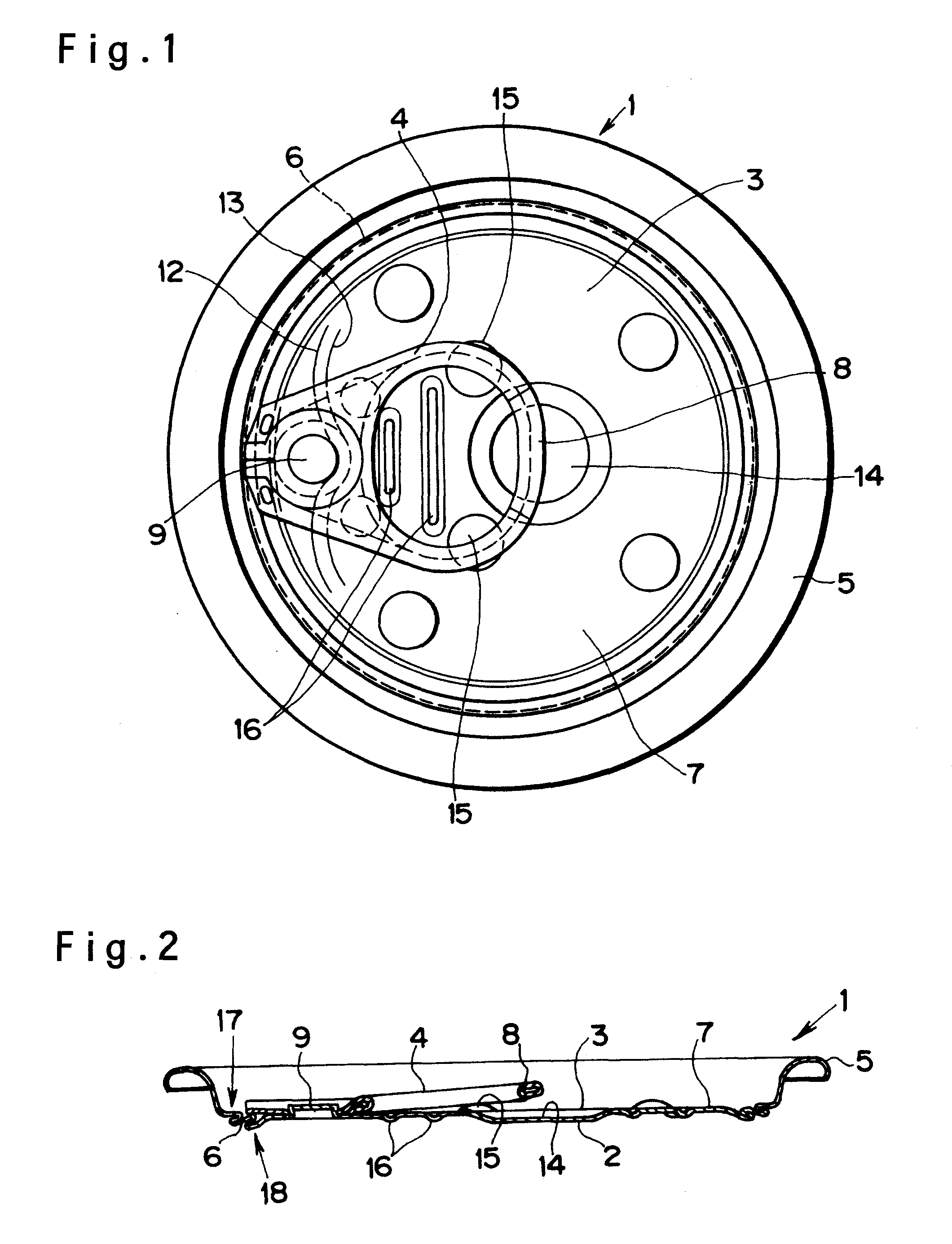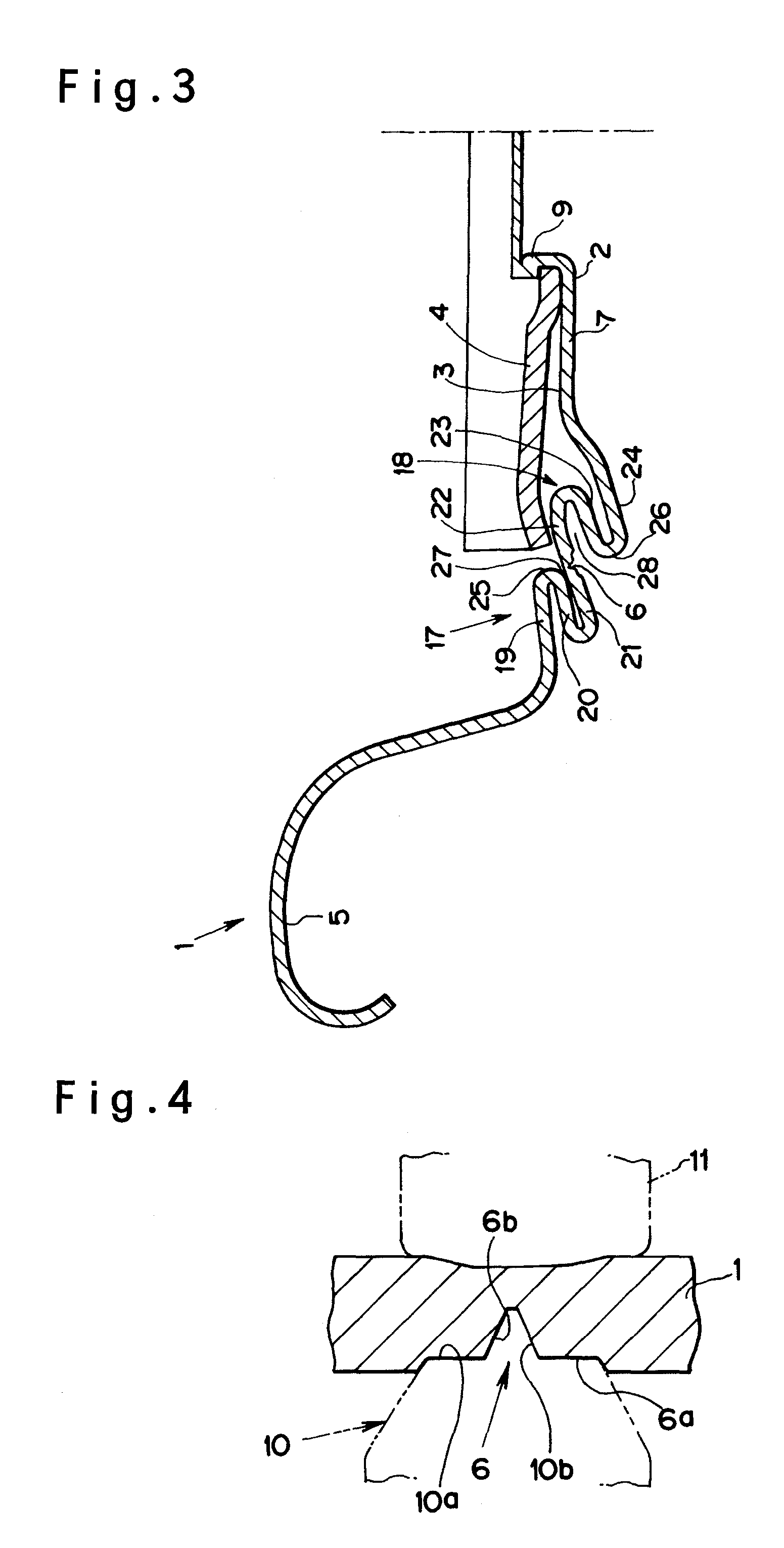Easily-Openable Can Lid
a can lid and easy-to-open technology, applied in the field of easy-to-open can lids, can solve the problems of deteriorating an openability, insufficient stiffness in the vicinity of a panel portion, and contact with the folded portion, so as to improve the openability of the can lid, increase the hardening of the outer multi-layered portion, and improve the deformation volume of the folding portion
- Summary
- Abstract
- Description
- Claims
- Application Information
AI Technical Summary
Benefits of technology
Problems solved by technology
Method used
Image
Examples
Embodiment Construction
[0019]According to an easy open can lid 1 of the present invention, a separated tab 4 for an opening operation of the can lid 1 is fixed on a main body where a panel portion 3 as an upper wall of a can container is formed. The main body is formed by pressing a thin metal sheet such as a surface-treated metal sheet, an aluminum alloy sheet or the like. At least an inner surface 2 of the main body to be contacted with the contents is coated with a not shown resin coating.
[0020]As illustrated in FIG. 1, the panel portion 3 is a substantially disc shaped portion occupying the majority of a central portion of the can lid 1, and a flange portion 5 for fixing a not shown can trunk is formed integrally around the panel portion 3. Also, a substantially annular score line 6 is drawn all around a periphery of the panel portion 3. As illustrated in FIGS. 2 and 3, the score line 6 is drawn on an outer circumference of the inner surface 2. As explained later, the score line 6 is a line to be rupt...
PUM
 Login to View More
Login to View More Abstract
Description
Claims
Application Information
 Login to View More
Login to View More - R&D
- Intellectual Property
- Life Sciences
- Materials
- Tech Scout
- Unparalleled Data Quality
- Higher Quality Content
- 60% Fewer Hallucinations
Browse by: Latest US Patents, China's latest patents, Technical Efficacy Thesaurus, Application Domain, Technology Topic, Popular Technical Reports.
© 2025 PatSnap. All rights reserved.Legal|Privacy policy|Modern Slavery Act Transparency Statement|Sitemap|About US| Contact US: help@patsnap.com



